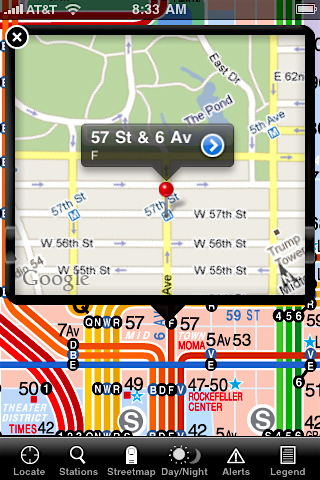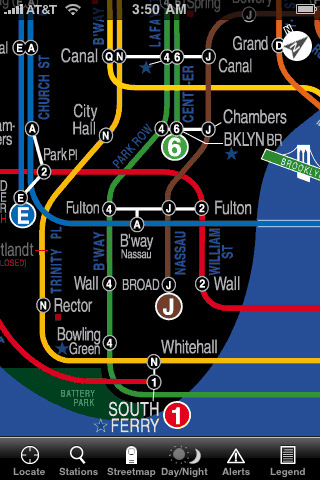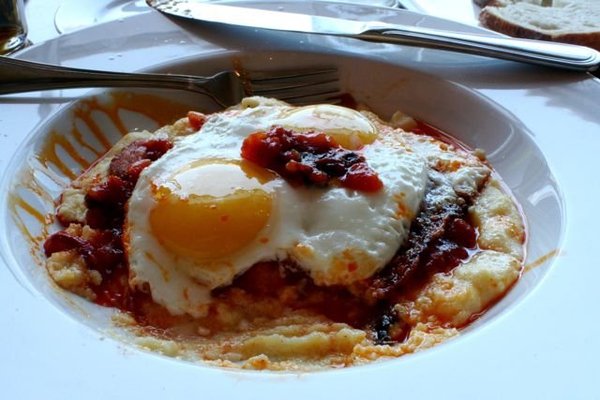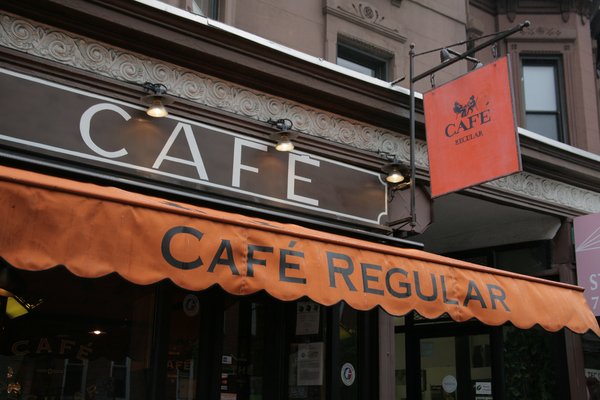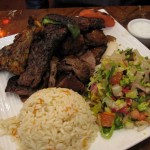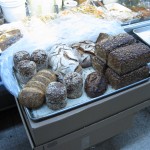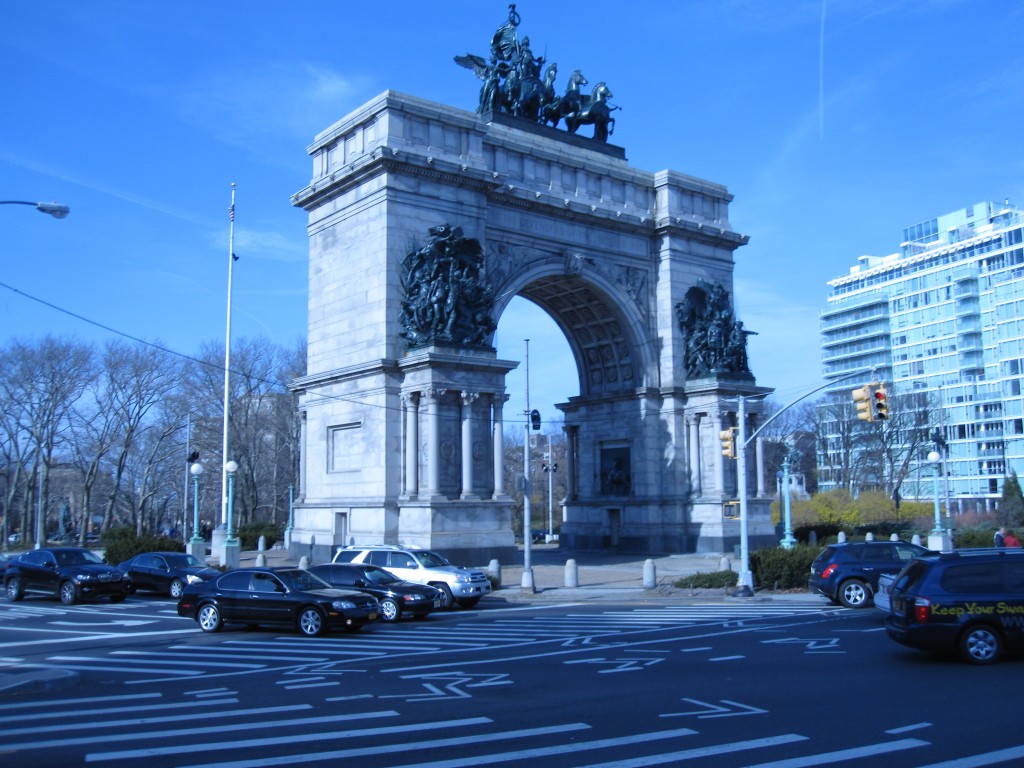What Every Visitor Needs to Know About the NYC Subway
Posted on April 20, 2013
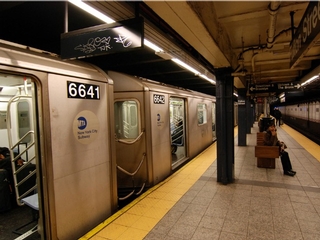
Whether you’re a new visitor to New York City or a veteran pleasure or business traveler making regular stopovers, there’s one resource you can leverage for easy access to the best activities, food, drink, and neighborhoods the city has to offer – the subway. The purpose of this website is to educate the reader about the best New York has to offer both in Manhattan and beyond, but the East River looms as a barrier for many a visitor, and the reason is not hard to guess – it was the same reason I avoided the outer boros on my first few visits: taking a cab was prohibitively expensive and I was afraid to take the subway.
Well, fear not, intrepid reader. If you’ve made it this far you’ve probably decided your trip needs a little more flavor than a hop-on-hop-off bus tour of Times Square. The good news is the subway is nothing to fear. True, it can be a frustrating time-waster if you don’t know what you’re doing, but once you master a few simple principles, you’ll discover that taking the subway is actually a rush, and blending in with the locals – rather than needlessly scrutinizing a pocket map and craning your head to look out the window at every stop – will enhance your enjoyment.
Below, the chief ways the NYC subway is different from those of other cities, and our top tips for both experienced urbanites and novices.
1. Know the difference between local and express
I’ve taken the subway systems of many US cities – including Boston, Chicago, and SanFrancisco – and a good sample of international ones as well – London, Tapiei, Beijing… – and rarely in these other cities was there a distinction made between local and express service. Well, in New York it’s a big deal. Ask anyone who’s hopped on a D train at Rockefeller Center hoping to end up at Lincoln Center (at 66th street, just a few blocks away) and instead ended up at 125th Street.
Why are NYC trains different? In most other places, each line has its own complete circuit. In New York, both because of scarcity of space in hub locations and due to some wonky (and frankly quite fascinating for NYC buffs) history involving ownership of various lines, lines with different terminals (endpoints) often share some stretches of track in common, and the designers of the system made the best of this otherwise totally illogical design (the main reason for clogs and delays) by inventing a division of labor: if the F train, eventually bound for Forest Hills Queens, and the B, on its way to the Bronx, both run up 6th ave, the B can run express. Anyway, onto the practical implications-
Local trains stop at every stop, but run slowly over large distances. The good news is you can’t really go wrong – if you hop on, you’ll be able to hop off – eventually – at any stop on the line during normal weekday service (assuming you know where you’re going and have selected the proper line).
Express trains skip stops – sometimes a lot of stops. In the above example, if you board a local B or C train at 59th Street going uptown (we’ll cover uptown versus downtown below) you can get off at 72nd, 79th, 86th, 96th, 103rd, 110th, 116th, and finally 125th streets. If, however, you board an express A or D train, you’ll be going all the way to 125th from 59th in about 8 minutes. It’s awesome if that’s where you’re headed, not so much if it’s not.
So – how do you tell the difference?
-It’s sometimes difficult to determine from the subway map exactly which lines are local and which are express. I’ll outline it in the next sentence, but I first want to emphasize that the official subway map should not be your primary source of information about these things. Ok, if you’re squinting at the map, express stops are open circles, and the names of all the trains that stop are listed next to them. Closed, or black, circles, are local stops, and only the local trains are listed next to those. Hence, on any line, look at the local stops to see the local trains, and the ones you only see at the express stops are the express. See what I meant about it being difficult from the map.
If you’re a novice and you’re in the station, here’s how you tell
– use your eyes and ears. If you’re at an express stop on the platform facing the direction the trains are going, the trains that pull up to your left (toward the center of the tunnel) will be express, and those to your right (next to the wall) will be local. There are few exceptions, but this holds true a good 90% of the time.
Finally,
–Listen to the announcements! On every train the conductor is required to recite the following “this is a [destination] bound [LOCAL/EXPRESS] train.” In most of the newer cars, a robot voice does it for you.
If it sounds intimidating, it will make sense after a single ride, and just remember, there’s no irreversible subway mistake. You can always turn around and reverse course.
2. At Local Stations, Uptown and Downtown trains often have two different entrances
In every neighborhood article on this site, we’ll be specific about which direction to take the train. Obviously it saves you time to know which way you’re going, but it will also save you money. It a great many stations, especially in Manhattan, different directions of train have different entrances. This is another idiosyncrasy that most other subway systems don’t share, and it stems partly from the shallowness of the tunnels in some parts of the city, though other designers solve the problem in other ways other places (take for instance the 2/3 train stop at 110th street).
Whatever the reason it’s important to know. If you intend to take the L train to Bedford Ave (say to visit Williamsburg) and enter through the “Brooklyn Bound” entrance, you’re good-to-go. If however you enter across the street at the “8th Avenue Bound” entrance, you’ll have to exit the station, cross the street, and pay again to go in the proper direction. A few extra seconds of preparation and a proper map application for your smart phone will save you a ton of trouble.
Again, if all else fails, listen to the announcement – “this is a [CORRECT DIRECTION/INCORRECT DIRECTION] – bound train…”. If you’re on the wrong train and can jump off quickly, do. Don’t make a scene though. It’s always easier to ride to the next stop and change direction than to body check a gauntlet of commuters on your way out the door. Positive karma is real in NYC.
3. Weekday service is different from weekend, and 9pm is the “magic hour”
There are number of good reasons to visit New York during the work week, among them that the majority of us will be at our jobs instead of competing with you for spots in line, restaurant reservations, spots at the bar, or seats on the subway, and the fact that usually travel to and from the city on weekdays is cheaper. But the biggest advantage is probably that the subway runs predictably and regularly. Trains come without too long a wait, and they go where the map says they go. (If you get a good smart phone app, it will display the route changes in evenings and weekends.)
Best times to use the subway are-
-“Off Peak” hours weekdays – read, “when locals are not commuting to or from work.” In general that means from 10am – 3pm and from 7-9pm.
-Before 9pm – 9 seems to be the hour when a lot of subway lines turn into pumpkins. While official service usually continues until midnight (when “off hours” service ensues), the unofficial track switches (the most notorious and confusing for novices “this F train is now running along the A line”) and “funny business” seems to start around 9pm. For a hassle-free commute back to your hotel or home – without eating $40 for a cab – plan to be aboard the last train in your sequence before 9pm.
4. Get a good Smart Phone Application
This will save you both headache and embarrassment. The dirty not-so-little not-so-secret is that the official MTA New York City Subway Map is a “best case scenario, weekday before 9pm” guide, and even then it’s woefully hard to read, and various places both exaggerates and undersells the difficulty of a transfer, the distance overground between two lines, the distance of a trip, etc.
Get a good iPhone or Android app – Chih-Yu recommends Kick Map, currently $2.99 on the Apple App Store, but you can search the application store for one with good reviews. Make sure it does the following things-
-Is easy to read and makes easy distinctions between local and express stations. Kick Map does this.
-Shows adaptive maps depending on the hour. (Below is a night shot from Kickmap.)
Notice the difference between the thick ropes of lines connecting every point during the day, and just a single line at night? This is important.
-Updates itself every time there’s a service change in the subway system and notifies you via the App Store. You can read the descriptions of each to see if your chosen app does this.
If you’re traveling from overseas and won’t be using the internet capabilities of your phone while in NYC, make sure to update the app immediately before leaving. That will ensure you’ll have the most up-to-date info.
The adjunct advantage to using an application instead of (not great) the official subway map or (worse still) a pocket map from a travel book is you won’t stand out quite so sorely as a tourist. If you’re simply glancing at your iPhone, it’s a little less conspicuous than peering feverishly at the map on the wall every few stops.
5. Finally – get a good mental picture of your route and use your ears, not your eyes, to determine when to hop off.
Few things are more annoying to locals than people standing nose-to-nose with us because we happen to be seated in front of the wall-mounted subway map or tugging our sleeve asking “does this go to queens”. Yes, we’ll help you, but you also want to look cool, right?
-First, have an idea where you’re going. If you know in advance that you’re taking a downtown/brooklyn-bound F train (to visit Park Slope, for example), and follow the signs, you’ll end up on the proper platform.
-Next, listen to the announcement to confirm that you’re correct. As I wrote above, conductors are required to announce the type, speed, and destination of the train at every stop. If you have your route well in mind, listen to the announcements when you’re getting close, and prepare to exit when you’ve left the second-to-last stop. But don’t step in anybody’s way to the door. There’s enough time for everyone to get off without territorial behavior.
One final thing to keep in mind – these tips are good to have in mind. If you’ve read this far you have an overview. Don’t sweat the details, just get a subway map app and get out there and experience it!
Looking Beyond Manhattan – Why the Outer Boros are the Real New York
Posted on April 19, 2013

The tourist trap is over.
The throngs of travelers content to snap photos from the line for the Empire State Building elevator, take a ferry to Lady Liberty, or sit through a Sex And The City Location tour will always be there in abundance, propping up many an overpriced venture. The TGI Friday’s in Times Square will always be full, selling $30 salads to willing connoisseurs, and many a holiday-maker will be left to wonder “how does anyone live here as expensive/crowded/inconvenient as it is?”
Answer: no one does.
Well a few people do. The Wall Street crowd can afford it, and live the way you might think they do from the movies (or if you’re a fan of Ted Danson’s George Christoper on Bored to Death), and a great many people live in gradually deteriorating rent-controlled apartments. The rest of us paid Manhattan rent for a few years, then we got hip to the outer boros. People without (and, increasingly, with) extraordinary wealth, but who know the city, tend to head for Brooklyn and Queens. What does that mean? The best restaurants, bars, shopping, and neighborhood culture – indeed, the best things to do in NYC – have moved with them.
A new generation of travelers is gradually getting wise to this.
North 11th Street in Williamsburg, home of Beacon’s Closet – perhaps Brooklyn’s most famous thrift store – and the Vice.com headquarters, is overrun with tourists during weekends. DUMBO, home of Food Network’s Bobby Flay and backdrop for…don’t make me say it again…Sex And The City…has become a bit like “Brooklyn Disney Land”.
These spots are worth visiting, and there are many more you haven’t heard of.
Want the most authentic Chinese, Taiwanese, and Korean food outside of Asia? Try Flushing, Queens, a 20 minute ride on the LIRR, and a single subway stop from the Mets’ City Field.
Interested in the next up-and-coming hip neighborhood, like Williamsburg but without the tourists? Look no farther than Prospect/Crown heights, home to a dizzying and ever-changing selection of restaurants, coffee shops and bars, and arguably the best pizza in New York.
Just to the north of Williamsburg, home to the most underrated brunch restaurant, Pizzeria, and steakhouse, respectively, is Greenpoint.
Why the outer boros? The same reason it’s better to stay with friends in a foreign city than to rely solely on a guide book: you’re getting a taste of the city from the vantage point of locals. Sure, Soho has great (if crowded/overpriced) shopping, you should see the East Village before you die, and Lincoln Center and Carnegie Hall are worth a visit if you can get tickets. But New Yorkers are both bargain-crazy and inventive to-a-fault. Williamsburg’s Barcade, where you can get a pint from one of the best taps in the city for an average of $6 and play vintage video games for the original prices all night, is more our pace. In the outer boros, especially if you ask a local, you’ll find-
-Authenticity – from Bushwick’s taco restaurant run out of the back room of a real tortilla factory to Woodside’s SriPraPhai, widely acknowledged to be one of the best Thai Restaurants in the country (think you’ve experienced Thai food? maybe…), to Carroll Gardens’ generations-old salami shops on Court Street, the outer boros are chocked full of spots in the magical post-popularity-with-the-locals, pre-tourist-mecca sweet spot.
-Beauty – Prospect Park, and Brooklyn Heights Promenade, and the streets of Cobble Hill, Park Slope, and Brooklyn Heights, are some of the most photogenic urban landscapes in North America, and unlike the Statue of Liberty and Central Park, they’re less crowded than you’d expect. Williamsburg, Crown Heights, and Bushwick – rugged spots tattooed with street art -are a different kind of beautiful, but no less “real”.
-Vibrance – it’s true that some of the most daring restrurants, like David Chang’s Momofuku, Masaharu Morimoto’s Masa, and Wiley DuFresne’s WD-50, as well as some of the “expense account” spots like 11 Madison Park and the Grammercy Tavern, still call Manhattan home. Many others, like Carroll Gardens’ Buttermilk Channel, Park Slope’s Al Di La, Williamsburg’s Fette Sau, and a rotating/ever-expanding cast of daring, chef-driven spots are proud to call Brooklyn home. The outer boros teem with entrepreneurial joie de vivre as restauranteurs and business-owners take advantage of their lower rent and growing consumer base.
-Higher Value – You night pay a lot for a meal in Brooklyn (though you certainly don’t need to) but rest assured your dollars are buying more. A luxurious evening can be had at Buttermilk Channel for around $150 for three, including wine – less than a third the price of a comparable Manhattan spot. And there’s a dizzying abundance of great meals under $20. (Prospect Heights’ The Islands, actually overpriced by Brooklyn standards, nonetheless serves up an overflowing plate of jerk chicken for around $10, on the low end of the price of an average Manhattan food truck.) Don’t even mention the bars, where great varietals of beer are available for between $4 and $10 a glass and decent wine bars start at around $8 a glass. (It’s true, there are some decent pubs in Manhattan, but if they’re not divy or overpriced, they’re overrun, like the West Village’s Blind Tiger Ale House – excellent, but standing-room-0nly any time after 4pm, 7 days-a-week.)
To experience a bit of all 3, check out the year-round indoor flea market at One Hanson Place, otherwise known as the Williamsburg Bank Building (not to be confused with Williamsburg the neighborhood unless you want an expensive and inconvenient excursion on the G train). Several hundred small crafts entrepreneurs make this flea market their home every Saturday and Sunday, and a chat with just a few of the razor-sharp, tech-savvy, artsy shopkeepers will imbue you with the outer boros spirit for weeks to come.
Whether you’re traveling to New York and looking to avoid the crowds and high prices, or a Manhattanite ready to look beyond the East River – whether Yelp, the recommendations of a friend, or (we hope) this site is your guide, give the outer boros a try, and get ready to experience the real New York.
Cobble Hill/Carroll Gardens Intro
Posted on April 15, 2013
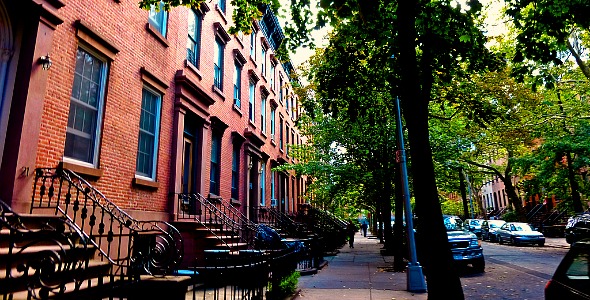
If you’re looking for the best things to do in NYC but feeling Manhattan-fatigue, look no farther than Cobble Hill. Cobble Hill is one of Brooklyn’s oldest neighborhoods, originally settled by the Dutch in the 1600s, and taking its name from the cobblestones that used to cover its streets. Unfortunately for pedestrians, those cobblestones are no longer there. Fortunately for motorists, those cobblestones are no longer there. (Spend an afternoon driving around Red Hook to understand what I mean.)
Anyway, here’s why you should care: Brooklyn has a number of these “postcard” neighborhoods – Park Slope, Brooklyn Heights, and even Bedford Stuyvesant to a degree – each with its own flavor. Walking the tree lined streets of Cobble Hill (we recommend Bergen or Pacific between Smith and Hoyt streets to get the idea – see map below) instills a similar zenlike calm to that of Park Slope’s rows of brownstones, but architecture buffs will spot subtle stylistic differences between the two neighborhoods’ buildings and lots. Start on the Carroll Gardens side (F to Carroll), and you’ll see the neighborhood’s unique feature – real front yards. Walk down President Street from Smith to Bond to get the archetypal Carroll Gardens sightseeing experience.
The beauty of these neighborhoods is more than skin deep. The stores, restaurants and bars that dot Court, Smith, and Henry Streets will blow your mind. If you’re feeling adventurous, try what’s arguably Brooklyn’s best Sushi restaurant (among stiff competitors), Ki Sushi. On the other end of the spectrum, both geographically and stylistically, is one of Brooklyn’s best New American (yelp’s phrase for “chef-driven, artisanal”) restaurants, Buttermilk Channel. In between is an eclectic mix of shops that includes everything from family-owned-generations-old salami shops to upstart cheese shops, and plenty of craft and fashion. If you’re looking for boutiques, you’ll find a few on Smith Street, though hardly the density you’d see in Williamsburg or next door along Atlantic Avenue. Here, it’s niche food oddities (often tinged with Carroll Gardens’ Italian American heritage) and kitsch that rules the day.
Read on for an ever-growing list of our recommendations.
How to Get There
We recommend taking the F train from one of its many Manhattan stops – no transfer required if you can catch it at one of these places. For more F train locations, consult the MTA Subway Map.
A. From Soho – “Brooklyn Bound” F train at Broadway/Lafayette – 15 minutes, service 24/7 unless posted.
B. From Greenwich Village – “Brooklyn Bound” F train at West 4th Street – 20 minutes, service 27/7 unless posted.
C. From 14th Street – “Downtown” F train at 14th Street and 6th Ave – 25 minutes, service 24/7 unless posted.
D. From Bryant Park/Times Square – “Downtown” F train at 42nd Street and 6th Ave, 35 minutes, service 24/7 unless posted.
E. From the upper east side – “Downtown” F train at 63rd St and Lexington Ave, 40 minutes, service 24/7 unless posted.
Where to Eat
1. Ki Sushi 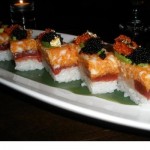 – 122 Smith Street between Dean and Pacific Streets
– 122 Smith Street between Dean and Pacific Streets
Comparing Ki to an average neighborhood sushi joint is like comparing your uncle who rolls some jiujistu to Anderson Silva. In fact it’s worth a trip from Manhattan just to eat at Ki, etc. You get the point.
Everything is good, including entres, salads, and appetizers. But you’re here for the fish. Don’t mess around – order the Ki Roll and the Spicy Girl Roll. Then thank yourself.
2. Court Street Grocers – 485 Court St between Nelson and Huntington Streets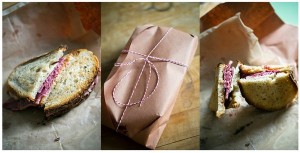
This slyly named shop is actually a forward-thinking, chef-driven take on the classic New York sandwich shop.
They let the menu speak for itself. It sports twists on many classic sandwich components like corned beef, roast beef, and even bacon, but the meats are mostly prepared from scratch in house. See if this makes your mouth water – “short ribs corned in house,” “heritage pork shoulder,” “house made roast beef,” “confit dark meat [turkey], roast white meat.”
Korzo
Posted on April 10, 2013
Barbes
Posted on April 10, 2013


Barbes, nestled unassumingly between a coffee shop and a brownstone just off the corner of 6th Ave and 9th Street in Brooklyn’s Park Slope, is a regular spot for locals, and almost altogether unknown for visitors to NYC. Want world-class jazz? Sure, the Vanguard will never fail you, as well it shouldn’t for its $90 pricetag for a show and drinks for two. Want to catch a great, surprising, genre-bending jazz show for a simple cover and uninflated drink prices? Barbes is your spot. Get there early, too, as it’s a small room!
Brook’Vin
Posted on April 10, 2013
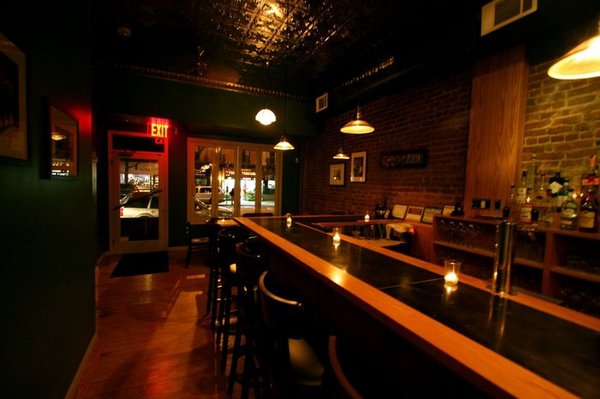

Brooklyn’s many wine bars (wait till you get to Cobble Hill and Carroll Gardens) have earned their reputation as exceptional alternatives to the traditional cocktail bar, dive bar, or pub, but Brook’Vin is head-and-shoulders above even most of them. Care was put into the arrangement of this bar, and it shows. The bar is massive, taking up 2/3 of the room, and allows an intimate interaction with the bartenders (all of whom were speedy, entertaining, and helpful) for a large number of people. Brook’vin has “shot the moon” by pulling off what seems impossible in New York, accommodating a full-house without seeming like a zoo.
Which is to say nothing of the wine selection itself – the house wines on tap are always good, a decent place to state – and the staff’s enthusiasm for wine shows through as they assist you gamely through the menu. A small and well-thought tasting menu cheese and charcuterie rounds out the experience.
Double Windsor
Posted on April 10, 2013
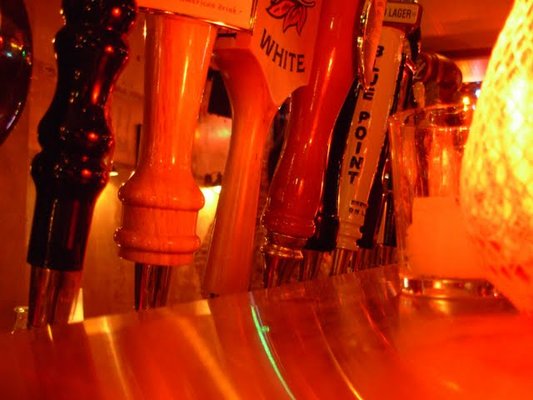

In a city traditionally known for its cocktail bars and dives, the beerofile gastropub is making a showing in a big way, and the Double Windsor, like its Manhattanite cousin the Blind Tiger Ale House, embodies the ethos. Here you’ll want to look at a beer menu (just think wine bar), but the staff are more than willing to help you choose, offering samples of everything. On the night I attended it was crowded, but I never waited more than 30 seconds for a bartender.
The Windsor also distinguishes itself from so many mind-numbing frat bars in the five boros by its inclusion of exceptional food. True, it’s burgers, fries, and chicken sandwiches, but think “chef-tweaked” – they’re not an afterthought. An altogether great spot to spend an evening, or a few minutes.
Cafe Regular
Posted on April 10, 2013
Park Slope One – F Train to 7th Ave
Posted on October 12, 2011
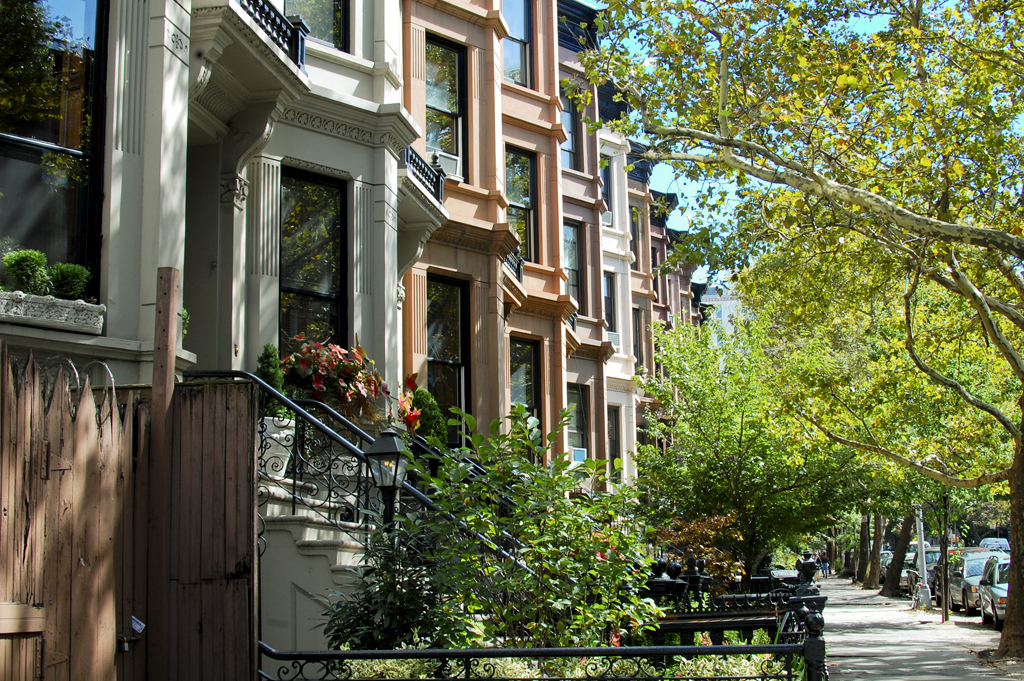
Welcome to Park Slope, consistently voted one of America’s most beautiful neighborhoods.
How to Get There
We recommend taking the F train from one of its many Manhattan stops – no transfer required if you can catch it at one of these places. For more F train locations, consult the MTA Subway Map.
A. From Soho – “Brooklyn Bound” F train at Broadway/Lafayette – 20 minutes, service 24/7 unless posted.
B. From Greenwich Village – “Brooklyn Bound” F train at West 4th Street – 25 minutes, service 27/7 unless posted.
C. From 14th Street – “Downtown” F train at 14th Street and 6th Ave – 30 minutes, service 24/7 unless posted.
D. From Bryant Park/Times Square – “Downtown” F train at 42nd Street and 6th Ave, 40 minutes, service 24/7 unless posted.
E. From the upper east side – “Downtown” F train at 63rd St and Lexington Ave, 45 minutes, service 24/7 unless posted.
Seventh Ave on the F train puts you right in the thick of postcard Park Slope. Why should you care about this neighborhood? If you’re checking out this website it’s likely because you’re either totally disinterested in Times Square and the Empire State Building or have seen them before.
You know what makes New York different from Dallas or Dubai?
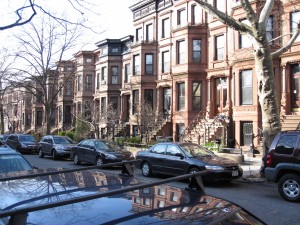 Its hundred-plus-year-old walkable neighborhoods. I could write all day, but once you step off the train at 7th ave and 9th Street you’ll get it. The slope adjoins Prospect Park on its west side, and drops gently in elevation down to 3rd Avenue. For this excursion, we’ve stuck to between 6th ave and Propect Park West, and between Grand Army Plaza and Park Circle.
Its hundred-plus-year-old walkable neighborhoods. I could write all day, but once you step off the train at 7th ave and 9th Street you’ll get it. The slope adjoins Prospect Park on its west side, and drops gently in elevation down to 3rd Avenue. For this excursion, we’ve stuck to between 6th ave and Propect Park West, and between Grand Army Plaza and Park Circle.
Below, our recommendations. We’ve assigned each a letter, corresponding to the marker on the map at the bottom of the post.
Click on the link for each recommended spot to read the review.
Eats
A. Istanbul Park – 293 7th Ave Bet 6th and 7th Street.
H. Korzo – 667 5th Ave (between 19th St & 20th St)
Coffee
B. Konditori – 240 7th Ave (between 5th St & 4th Ave)
C. Cafe Regular – 318 11th St (between 4th Ave & S Prospect Park)
Shopping
There’s plenty of great shopping to be had exploring 7th Ave itself, but we have several recommendations:
D. D’Vine Taste – 150 7th Ave (between Garfield Pl & Carroll St)
Bars
E. Double Windsor – 210 Prospect Park W (between Bartel Pritchard Sq & 16th St)
F. Brook’vin – 381 7th Ave (between Between 11th & 12th Streets)
G. Barbes – 376 9th St (between 6th Ave & 7th Ave)
H. Korzo – 667 5th Ave (between 19th St & 20th St)
Grand Army Plaza
Posted on October 11, 2011
 Beyond Manhattan Blog
Beyond Manhattan Blog